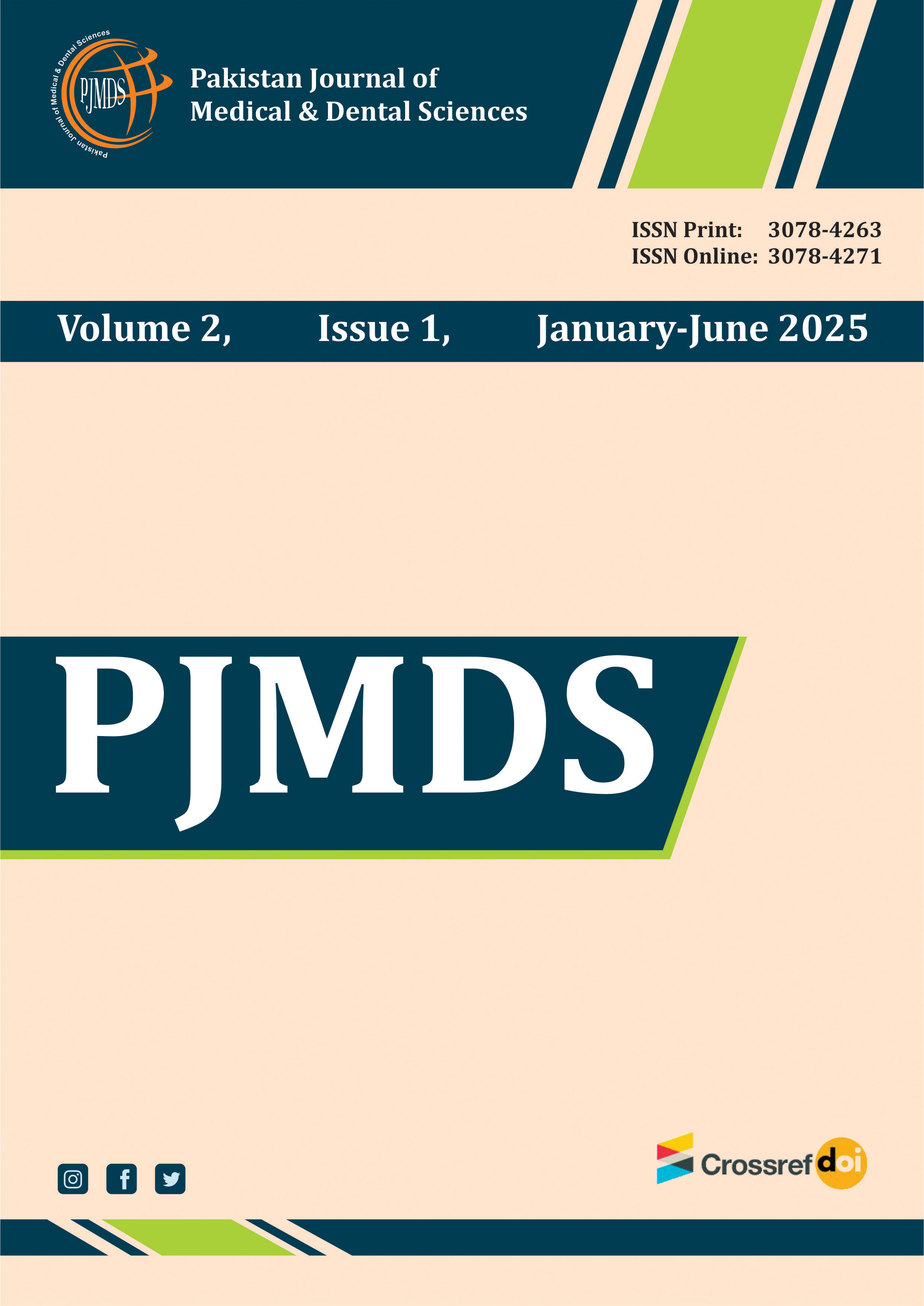COMPARISON OF MODIFIED DARN REPAIR AND MESH REPAIR FOR INGUINAL HERNIA : RANDOMIZED CONTROL TRIAL
Abstract
Objective:
To compare the outcome of modified darn repair and mesh repair in patients presenting with inguinal hernia.
Methodology:
This randomized controlled trial was executed at SMBBMU, Larkana (November 2022–December 2023),encompassing 350 individuals diagnosed with inguinal hernia (ages 18–60, either gender). Subjects were randomly allocated to either the Modified Darn Repair (MDR) or Mesh Repair (MR) cohorts employing the SNOSE methodology. The evaluated outcomes comprised operative duration, postoperative discomfort, duration of hospital stay, recovery period, and complications. Data were subjected to statistical analysis utilizing SPSS version 26, with statistical significance established at p ≤ 0.05.
Results:
This study included 350 patients (186 MR, 164 MDR) with a mean age of 33.32 ± 9.85 years (MR) and 32.34 ± 8.37 years (MDR). Males constituted 90.3% (MR) and 95.7% (MDR). Compared to MR, MDR had a shorter operative time (38.75 ± 6.36 vs. 40.93 ± 7.31 mins, p=0.003), lower pain scores (3.77 ± 1.29 vs. 4.16 ± 1.57, p=0.012), faster recovery (15.06 ± 2.73 vs. 15.82 ± 2.93 days, p=0.013), and fewer complications, supporting its efficacy as an alternative approach.
Conclusion:
This investigation indicated that Modified Darn Repair (MDR) and Mesh Repair (MR) are both effective options for the treatment of inguinal hernia. MDR had some benefits such as shorter hospital stays, less postoperative pain, and lower complication rates. It is, therefore, a viable alternative, particularly for patients with a risk of mesh-related complications, given its lower infection and recurrence rates. The current findings need to be confirmed in larger studies involving multiple study centres.
Keywords:
Hernia surgery, Mesh repair, Modified darn repair, Postoperative complications, Recurrence rate
Published
How to Cite
Issue
Section
License
Copyright (c) 2025 Pakistan Journal of Medical & Dental Sciences

This work is licensed under a Creative Commons Attribution 4.0 International License.






